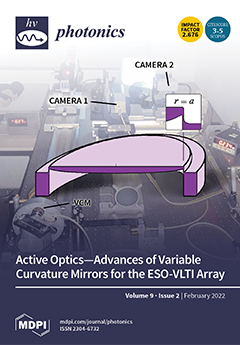Open AccessArticle
Flexible Plenoptic X-ray Microscopy
by
Elena Longo, Domenico Alj, Joost Batenburg, Ombeline de La Rochefoucauld, Charlotte Herzog, Imke Greving, Ying Li, Mikhail Lyubomirskiy, Ken Vidar Falch, Patricia Estrela, Silja Flenner, Nicola Viganò, Marta Fajardo and Philippe Zeitoun
Cited by 1 | Viewed by 2878
Abstract
X-ray computed tomography (CT) is an invaluable technique for generating three-dimensional (3D) images of inert or living specimens. X-ray CT is used in many scientific, industrial, and societal fields. Compared to conventional 2D X-ray imaging, CT requires longer acquisition times because up to
[...] Read more.
X-ray computed tomography (CT) is an invaluable technique for generating three-dimensional (3D) images of inert or living specimens. X-ray CT is used in many scientific, industrial, and societal fields. Compared to conventional 2D X-ray imaging, CT requires longer acquisition times because up to several thousand projections are required for reconstructing a single high-resolution 3D volume. Plenoptic imaging—an emerging technology in visible light field photography—highlights the potential of capturing quasi-3D information with a single exposure. Here, we show the first demonstration of a flexible plenoptic microscope operating with hard X-rays; it is used to computationally reconstruct images at different depths along the optical axis. The experimental results are consistent with the expected axial refocusing, precision, and spatial resolution. Thus, this proof-of-concept experiment opens the horizons to quasi-3D X-ray imaging, without sample rotation, with spatial resolution of a few hundred nanometres.
Full article
►▼
Show Figures





